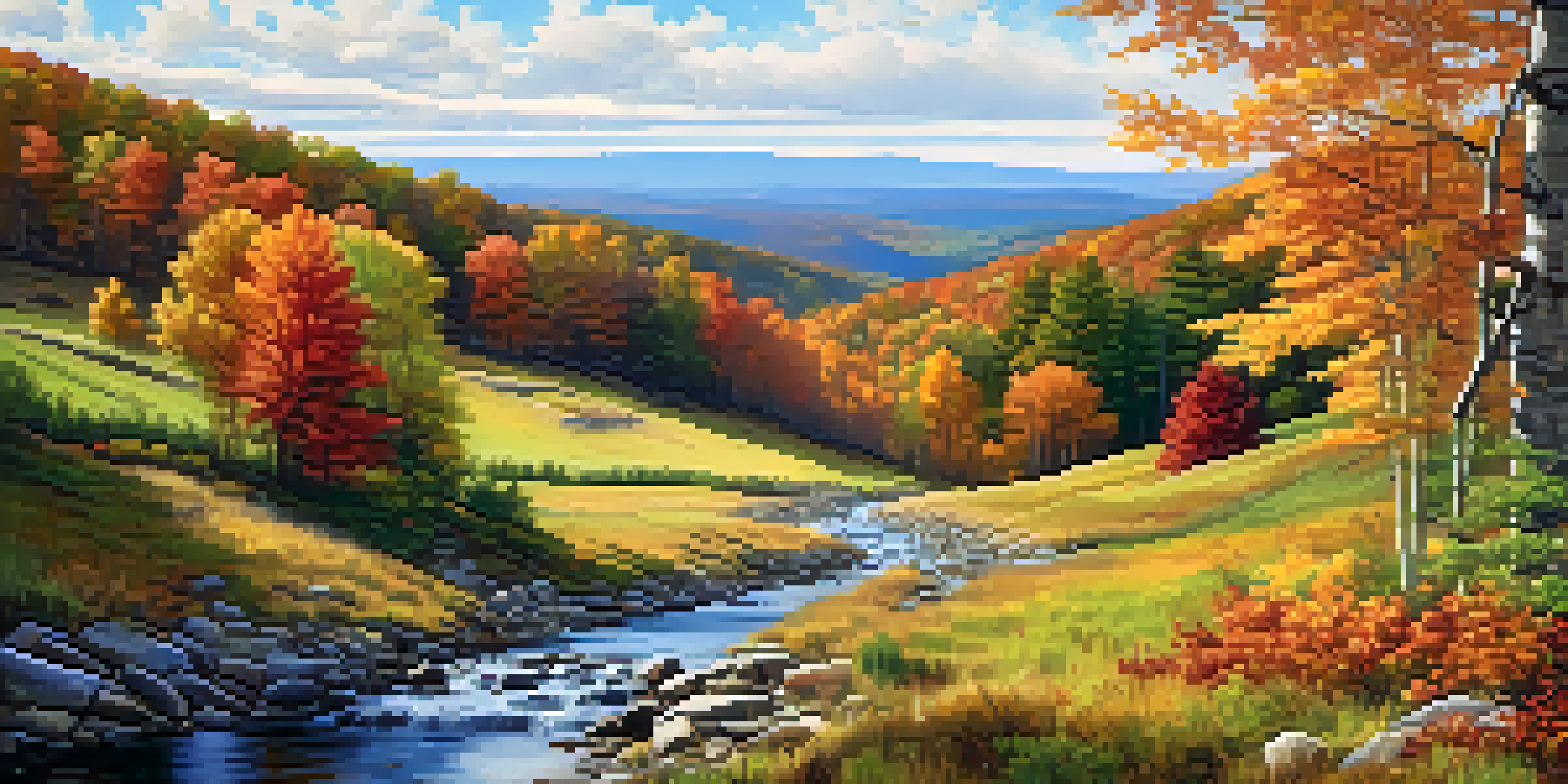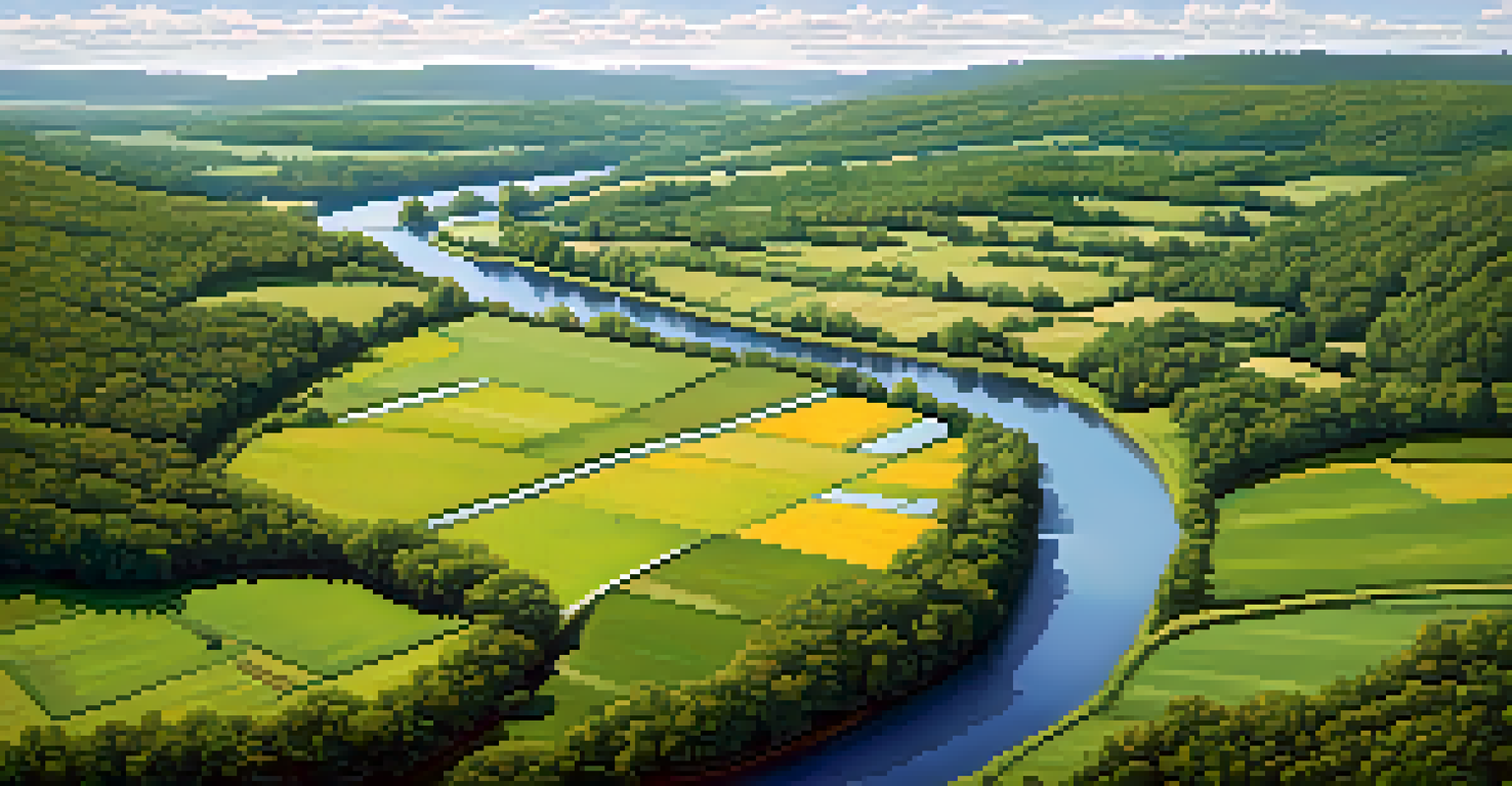Geographical Features of New Jersey: Mountains and Valleys

Introduction to New Jersey's Geography and Landscape
New Jersey may be small in size, but it boasts a diverse range of geographical features. From the rolling hills of the north to the flat plains of the south, this state offers a unique blend of natural beauty. Understanding these features helps us appreciate the state's rich environmental tapestry.
The mountains are calling and I must go.
The state's geography is not just a backdrop; it has influenced the culture, economy, and lifestyle of its residents. For instance, the mountainous regions impact weather patterns, while the valleys contribute to agriculture. Each area tells its own story, shaped by the land itself.
As we delve deeper into New Jersey's mountains and valleys, we'll uncover the distinct characteristics and wonders that make this state a hidden gem in the northeastern United States.
The Appalachian Mountains: A Majestic Presence
The Appalachian Mountains stretch into the northwestern part of New Jersey, offering stunning landscapes and outdoor adventures. This range is not only a natural barrier but also a habitat for diverse flora and fauna. The highest peak, High Point, stands at over 1,800 feet and provides breathtaking views of the surrounding area.

Hiking enthusiasts flock to the Appalachian Trail, which runs through this mountainous region. Trails like the Kittatinny Ridge offer everything from leisurely walks to challenging climbs. These mountains are perfect for exploring nature, whether you're hiking, biking, or simply enjoying a picnic.
Diverse Geography Shapes New Jersey
New Jersey's varied landscapes, from mountains to valleys, significantly influence its culture, economy, and lifestyle.
Moreover, the Appalachian Mountains are steeped in history, with Indigenous peoples and early settlers calling this region home. Their stories are woven into the fabric of the land, adding a rich cultural layer to the natural beauty.
Kittatinny Valley: A Natural Treasure
Nestled between the Appalachian Mountains and the Highlands, the Kittatinny Valley is a remarkable geological feature in New Jersey. This valley is characterized by its flat terrain, fertile soil, and lush greenery, making it ideal for agriculture. Farmers have cultivated this land for generations, producing a variety of crops.
In every walk with nature, one receives far more than he seeks.
The valley is also home to several rivers, including the Delaware River, which adds to its scenic charm. These waterways not only support wildlife but also provide recreational opportunities for kayaking and fishing. The picturesque views along the banks draw visitors from near and far.
In addition to its agricultural significance, Kittatinny Valley is rich in biodiversity. The mix of habitats fosters a thriving ecosystem, making it an excellent spot for birdwatching and nature walks.
The Highlands: A Unique Geographical Feature
The Highlands region of New Jersey is known for its rugged terrain and dramatic elevation changes. This area is significant not just for its beauty but also for its role in the state's water supply. The Highlands serve as a crucial watershed, collecting and filtering rainwater that supplies millions of residents.
Visitors to the Highlands can explore numerous parks and nature reserves, where hiking trails wind through dense forests and rocky outcrops. The views from the higher elevations are nothing short of spectacular, especially during the fall when the leaves turn vibrant shades of red and gold.
Appalachian Mountains: A Natural Gem
The Appalachian Mountains offer stunning views and outdoor activities, making them a crucial part of New Jersey's natural heritage.
Moreover, the Highlands are a sanctuary for various wildlife species, including deer, foxes, and numerous bird species. This rich biodiversity makes the Highlands an essential area for conservation efforts and outdoor recreation.
The Pine Barrens: An Ecological Wonder
While not a mountain or valley in the traditional sense, the Pine Barrens represent a unique geographic feature of New Jersey. Covering over a million acres, this region is characterized by its sandy soil, pine forests, and an array of wetlands. The Pine Barrens are a prime example of an ecosystem that thrives despite seemingly harsh conditions.
This area is home to rare species of plants and animals, making it a hotspot for ecological research. The unique landscape, shaped by fire and water, creates a diverse habitat that supports life in unexpected ways. It’s a reminder of nature's resilience and adaptability.
Exploring the Pine Barrens feels like stepping into another world, with winding trails, tranquil lakes, and the distinctive sounds of nature. It's a favorite spot for hiking, camping, and even ghost tours, showcasing the area's rich cultural lore.
Valleys of New Jersey: More Than Just Flat Land
New Jersey’s valleys are often overlooked, but they play a vital role in the state's geography and ecology. From the fertile farmlands of the Delaware Valley to the serene landscapes of the Raritan Valley, each valley has its own unique character. These areas not only provide agricultural benefits but also support diverse wildlife habitats.
The valleys are often shaped by the rivers that flow through them, creating lush environments rich in biodiversity. The combination of water, soil, and sunlight leads to vibrant plant life, which in turn supports various animal species. This interconnectedness is a beautiful example of nature at work.
Valleys Support Biodiversity and Recreation
New Jersey's valleys, often overlooked, are vital for agriculture and provide rich habitats for wildlife while also offering recreational opportunities.
Additionally, these valleys are popular for recreational activities such as biking, fishing, and hiking. They offer a peaceful escape from bustling urban areas, inviting residents and visitors alike to connect with nature.
Conclusion: The Importance of New Jersey’s Geography
Understanding the geographical features of New Jersey is essential for appreciating the state's natural beauty and ecological significance. The mountains and valleys not only shape the landscape but also influence the lives of those who call New Jersey home. From recreation to conservation, these features are integral to the state's identity.
As we’ve explored, each region—from the rugged Highlands to the tranquil Pine Barrens—offers something unique. These geographical features create a rich tapestry of experiences, encouraging exploration and fostering a deeper connection to the environment.

In essence, New Jersey’s mountains and valleys are more than just physical features; they are a testament to the state’s history, culture, and natural heritage. Embracing and protecting these landscapes ensures they will continue to inspire future generations.